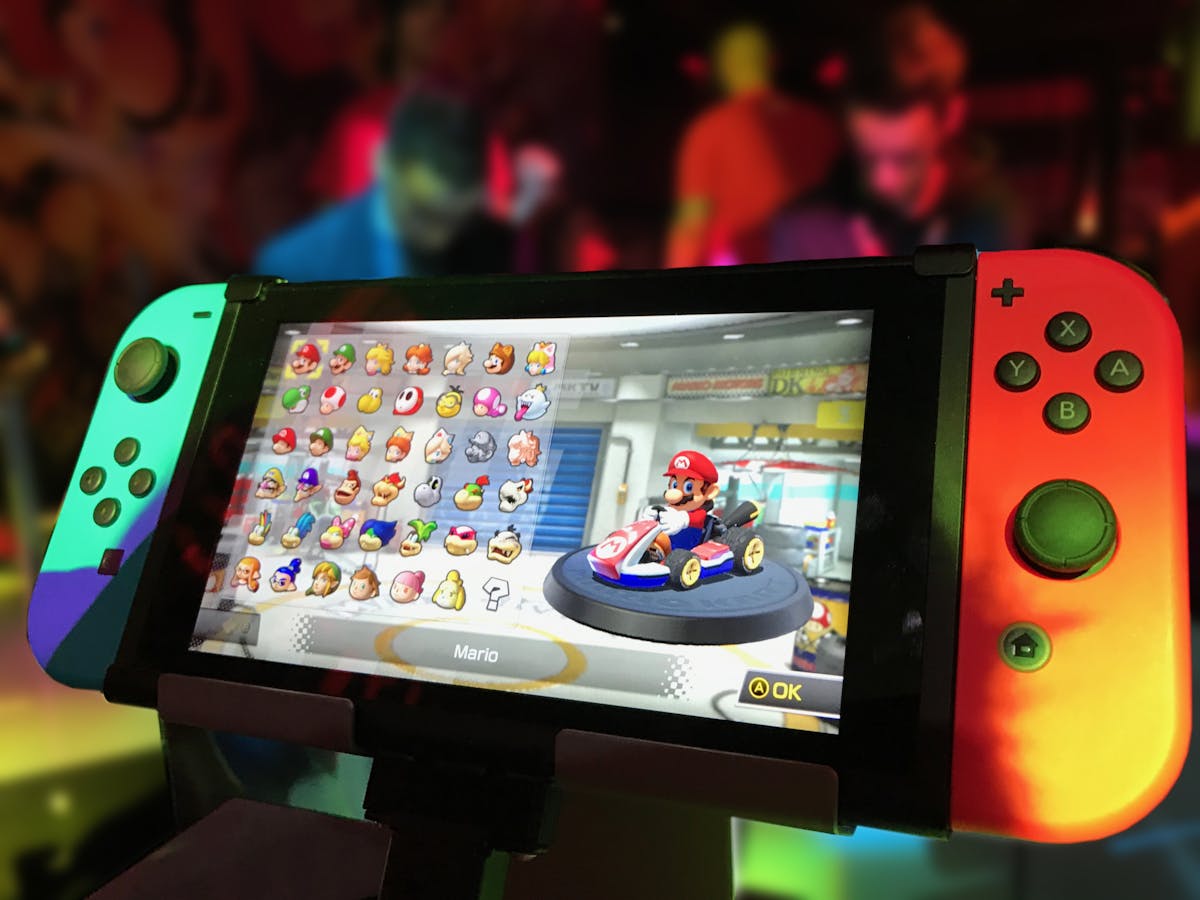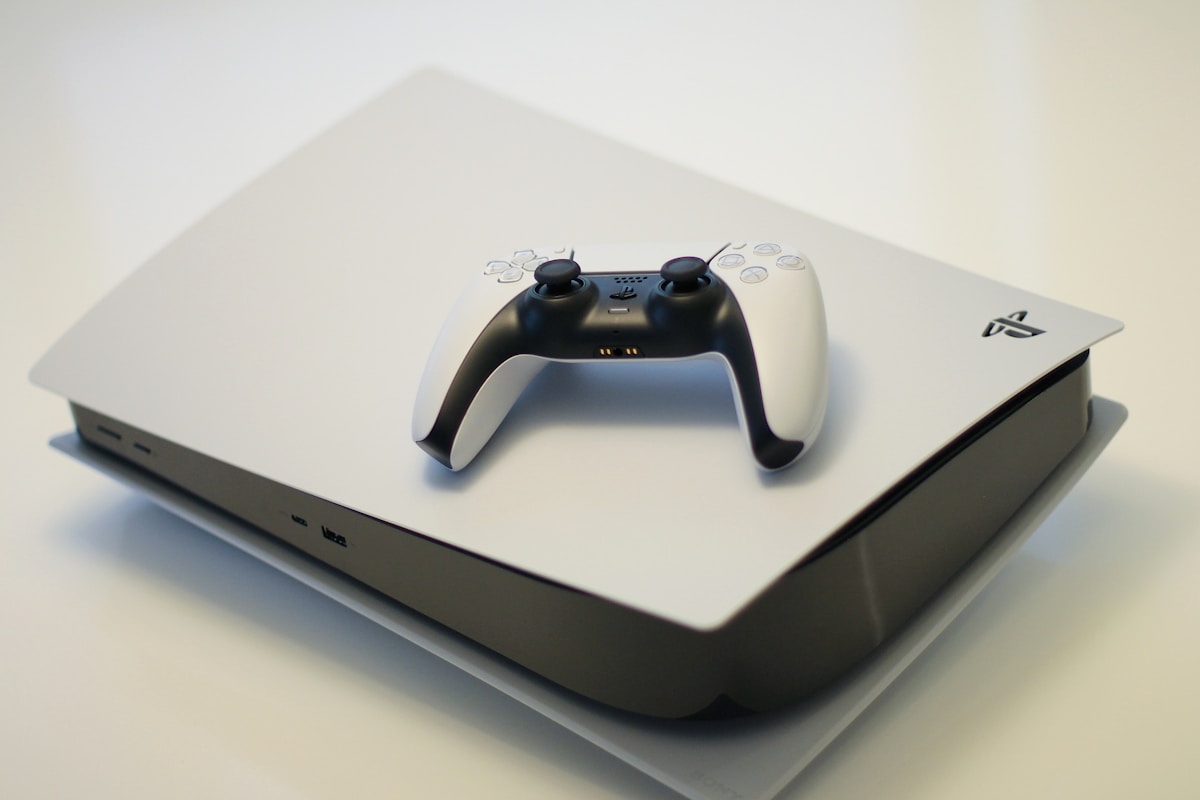Sony just told the gaming world something that doesn’t quite add up. During the company’s Q2 fiscal year 2025 earnings briefing on November 10, Chief Financial Officer Lin Tao stated that the PlayStation 5 is only in the middle of its lifecycle, with plans to expand it even further. The console launched November 12, 2020, making it exactly five years old as of this week. If we’re only at the midpoint now, that suggests Sony plans to support the PS5 until 2030 or beyond. But here’s the problem: credible hardware leakers including Moore’s Law Is Dead claim they’ve seen documents showing PS6 manufacturing starts in early 2027, with a launch that same year or early 2028.
Something doesn’t add up between Sony’s public statements and the leaked production schedules. Either Sony is intentionally misleading investors and consumers about their next-gen plans, or the leaks are wrong, or there’s a third option nobody’s talking about where both things are simultaneously true. With the PS5 reaching 84.2 million lifetime sales and the PS5 Pro barely a month old, Sony faces complicated decisions about when to transition generations and how to maximize revenue from their current hardware investment.
- What Sony Actually Said About PS5’s Future
- The Leaked PS6 Timeline That Contradicts Everything
- The Sales Numbers That Explain Sony’s Confusion
- The PS5 Pro Complicates Everything
- What Extended Lifecycle Actually Means
- The Technology Pressure Sony Can’t Ignore
- The Economic Reality Behind the Messaging
- What This Means for Players
- FAQs
- Conclusion
What Sony Actually Said About PS5’s Future
Lin Tao’s comments during the earnings call were translated from Japanese by multiple sources including Genki_JPN and Destin Legarie. The CFO explained that console lifecycles are getting longer compared to previous generations. The PlayStation 4 launched in 2013 and still has many active users over a decade later. From that perspective, Sony believes the PS5 is only in the middle of the journey and they’re planning to expand it even further, especially during the year-end sales season.
When asked about future launches and successors, Tao explicitly stated she couldn’t comment on that. This non-answer is telling because Sony typically doesn’t acknowledge next-generation hardware until they’re ready to formally announce it. But the framing of PS5 being at its midpoint strongly suggests Sony wants investors and consumers to believe the current generation has at least five more years of primary support ahead. That timeline would put the PS6 arriving around 2030, which contradicts literally every credible leak from the past year.
The Shift From Previous Messaging
What makes this statement particularly interesting is how it contradicts Sony’s own previous messaging. Earlier in 2025, the company suggested the PS5 was entering the latter half of its lifecycle, anticipating sales declines starting in the next fiscal year. That positioning made sense given the console was approaching its fifth birthday and traditional console generations last seven to eight years. But now, after strong sales performance including 3.9 million units sold in Q2 2025, Sony has completely reversed that narrative.
The about-face suggests Sony is reacting to better-than-expected market conditions rather than executing a pre-planned strategy. The PS5 Pro launched in September 2025 and appears to be performing well enough to justify extending the generation. Ghost of Yotei sold 3.3 million copies within a month of its October release, demonstrating that exclusive first-party titles still move hardware. Monthly active users on PlayStation Network reached 119 million, up from 116 million in Q2 2024. These are strong numbers that give Sony flexibility to delay next-gen transitions if they choose.

The Leaked PS6 Timeline That Contradicts Everything
Hardware leaker Moore’s Law Is Dead dropped a bombshell in October 2025, claiming to have seen internal documents showing PS6 manufacturing scheduled for mid-2027 or even early 2027. MLID has a solid track record for PlayStation hardware leaks, including accurate information about PS5 Pro specifications months before official announcement. During a podcast with Sacred Symbols host Dustin Furman, MLID stated that Sony has been planning these manufacturing timelines for at least two years, suggesting this isn’t speculation but actual production schedules from AMD or PlayStation internal documents.
Fellow hardware leaker KeplerL2, another credible source for console information, corroborated the 2027 target window. If PS6 goes into full manufacturing in early 2027, a fall 2027 retail launch becomes feasible. More conservatively, it points toward an early to mid-2028 release. Either timeline conflicts dramatically with Sony’s public positioning of PS5 being only halfway through its lifecycle. A 2027 PS6 launch would give PS5 a seven-year primary lifecycle, exactly matching PS4’s timeframe and contradicting the claim about expanding beyond traditional cycles.
The Sales Numbers That Explain Sony’s Confusion
The PlayStation 5 has now sold 84.2 million units lifetime as of September 30, 2025. That puts it less than 2 million units behind the PS4’s current total of approximately 86 million, though exact final PS4 numbers are unclear since Sony stopped reporting them regularly. The PS5 sold 3.9 million units in Q2 2025 alone, slightly up from 3.8 million in the same quarter of 2024. Sony expects to reach 90 million lifetime units by the end of fiscal year 2025 in March, which seems achievable given holiday sales momentum.
These are excellent numbers that have already made PS5 more successful than Game Boy Advance and every Xbox console generation. However, they’re also numbers that Sony needs to sustain to justify their massive investment in the platform. Introducing a PS6 in 2027 or 2028 would immediately position the PS5 as last-gen hardware in consumers’ minds, potentially tanking sales of the current console and the recently launched PS5 Pro. Sony faces a delicate balancing act between maintaining PS5 momentum and avoiding the trap of waiting too long to introduce next-gen technology.
The PS5 Pro Complicates Everything
Sony launched the PlayStation 5 Pro in September 2025 at a premium $699 price point, positioning it as the ultimate version of current-gen hardware. The console features enhanced GPU performance, advanced ray tracing, PlayStation Spectral Super Resolution upscaling technology, and improved rendering capabilities. It’s designed to deliver 4K60 performance with ray tracing in games that previously required choosing between fidelity and performance modes. The PS5 Pro represents significant engineering effort and marketing investment.
Announcing a PS6 for 2027 or 2028 would make the PS5 Pro look like a terrible investment for consumers who bought it expecting it to be cutting-edge for at least three to four years. Early adopters would rightfully feel burned if superior hardware arrives within two years of their $699 purchase. This dynamic creates pressure on Sony to extend the PS5 generation specifically to protect PS5 Pro buyers and justify the product’s existence. However, it also creates risk that Sony falls behind in the technology curve if Microsoft or Nintendo introduce competitive next-gen hardware first.
What Extended Lifecycle Actually Means
When Sony says they plan to expand the PS5 lifecycle, that doesn’t necessarily mean delaying the PS6. The PS4 provides the blueprint for what extended support looks like. That console launched in 2013 and still received new game releases through 2021 and beyond, more than eight years after launch. Major titles like Horizon Forbidden West, God of War Ragnarok, and even Spider-Man 2 released on both PS4 and PS5, extending the previous generation’s viability years after its successor arrived.
Sony could easily announce the PS6 for 2027 or 2028 while continuing to support PS5 through 2030 with cross-generation releases. This approach maximizes the install base for new games by not forcing players to upgrade immediately, while still providing cutting-edge experiences for early adopters who buy next-gen hardware. It’s the most consumer-friendly strategy and it matches what Sony successfully executed with the PS3-to-PS4 and PS4-to-PS5 transitions. Lin Tao’s comments about extending the lifecycle could simply mean this overlap period rather than delaying the next console.

The Technology Pressure Sony Can’t Ignore
The gaming industry doesn’t pause for Sony’s business preferences. AMD continues developing more powerful chips. NVIDIA keeps pushing graphics technology forward. Game engines like Unreal Engine 6 will eventually require hardware capabilities that current-gen consoles can’t deliver. If Sony waits too long to introduce next-gen technology, they risk creating a situation where third-party developers optimize primarily for PC and Xbox while treating PlayStation as an afterthought requiring compromised versions.
The PS5 launched with custom AMD RDNA 2 architecture that was cutting-edge in 2020. Five years later, that technology is dated compared to modern GPUs. The PS5 Pro mitigates some limitations through architectural improvements and AI upscaling, but it’s still fundamentally based on 2020-era technology with iterative enhancements. By 2027, AMD will have RDNA 5 or beyond available for console integration. Machine learning capabilities will have advanced significantly. Ray tracing performance will be dramatically better. Delaying the PS6 beyond 2028 means PlayStation hardware falls further behind the technology curve.
The Economic Reality Behind the Messaging
Sony’s messaging about extended lifecycles isn’t just about player experience. It’s fundamentally about economics. Designing, manufacturing, and marketing a new console generation costs billions of dollars. Sony needs to maximize revenue from their PS5 investment before cannibalizing it with a successor. The pandemic disrupted PS5’s early years, creating supply shortages that prevented Sony from building their install base as quickly as planned. Many consumers didn’t get PS5 consoles until 2022 or 2023, meaning the generation feels younger to them than its November 2020 launch date suggests.
From Sony’s financial perspective, treating the PS5 as mid-lifecycle makes sense even if the technical calendar says otherwise. They’re still growing the user base, still selling premium hardware like PS5 Pro, still expanding PlayStation Network subscriptions, and still releasing first-party exclusives that drive ecosystem engagement. Starting the PS6 hype cycle now would immediately depress PS5 sales as consumers adopt a wait-and-see attitude. Sony needs at least two more strong holiday seasons from current-gen hardware before transitioning focus to next-gen.
What This Means for Players
For consumers trying to make purchasing decisions, Sony’s ambiguous messaging creates frustration. Should you buy a PS5 or PS5 Pro now, or wait for PS6? If the console is truly at its midpoint with five more years ahead, buying now makes sense. If PS6 launches in 2027, you’re buying hardware that becomes last-gen within two years. Sony benefits from this uncertainty because it discourages people from holding off purchases, but it also breeds cynicism when companies say one thing publicly while internal documents suggest another.
The safest assumption is that PS6 arrives sometime between late 2027 and early 2029, with Sony continuing to support PS5 through cross-generation releases until 2030 or beyond. If you’re happy with current-gen performance and have a backlog of PS4 and PS5 games to play, waiting makes sense. If you want the best possible experience for upcoming titles like Ghost of Yotei, GTA 6, or Wolverine, buying a PS5 or PS5 Pro now provides years of excellent gaming before next-gen becomes necessary. The PS5 Pro specifically seems designed for enthusiasts who want premium current-gen experiences without waiting for whatever comes next.
FAQs
When did Sony say PS5 is in the middle of its lifecycle?
Sony CFO Lin Tao made the statement during the company’s Q2 fiscal year 2025 earnings briefing on November 10, 2025, exactly five years after the PS5 launched on November 12, 2020. She said Sony believes the PS5 is only in the middle of the journey and plans to expand it even further.
How many PS5 consoles have been sold?
As of September 30, 2025, the PlayStation 5 has sold 84.2 million units worldwide. The console sold 3.9 million units during Q2 2025 alone, and Sony expects to reach 90 million lifetime units by the end of fiscal year 2025 in March 2026.
When will the PS6 be released?
Sony has not officially announced the PS6. However, credible hardware leakers including Moore’s Law Is Dead claim internal documents show PS6 manufacturing scheduled for early to mid-2027, suggesting a late 2027 or early 2028 retail launch. This timeline conflicts with Sony’s public statements about extending the PS5 lifecycle.
What does extended lifecycle mean for PS5?
Extended lifecycle likely means Sony will continue supporting PS5 with new game releases and cross-generation titles even after PS6 launches, similar to how PS4 received major releases years after PS5 arrived. This doesn’t necessarily mean delaying the next console, just overlapping support between generations.
Should I buy a PS5 or PS5 Pro now or wait for PS6?
If PS6 launches in late 2027 or 2028, that’s still 2-3 years away. Buying a PS5 or PS5 Pro now provides years of gaming before next-gen becomes necessary. The PS5 Pro specifically offers premium current-gen performance that will remain relevant through cross-generation support even after PS6 arrives.
How long was the PS4 lifecycle?
The PS4 launched in November 2013 and remained the primary PlayStation console until the PS5 launched in November 2020, a seven-year primary lifecycle. However, Sony continued supporting PS4 with new releases through 2021 and beyond, with some games still receiving PS4 versions as late as 2023.
What is the PS5 Pro and when did it launch?
The PS5 Pro is a premium mid-generation upgrade priced at $699 that launched in September 2025. It features enhanced GPU performance, advanced ray tracing, AI-powered upscaling through PSSR technology, and improved rendering capabilities designed to deliver 4K60 performance with ray tracing in demanding games.
Why is Sony extending the PS5 generation?
Sony’s reasoning includes several factors: pandemic disruptions delayed many consumers from buying PS5 until 2022-2023, making the generation feel younger than its 2020 launch suggests; the PS5 Pro just launched and needs time to establish itself; and strong sales numbers including 84.2 million units sold justify maximizing current-gen revenue before transitioning to next-gen development costs.
Conclusion
Sony’s claim that the PlayStation 5 is only in the middle of its lifecycle five years after launch reveals the complicated economics and strategic positioning of modern console generations. Lin Tao’s statement that they plan to expand the PS5 journey even further suggests support through 2030, but leaked manufacturing schedules for PS6 starting in 2027 tell a different story. The most likely reality is that both things are true simultaneously – Sony will launch the PS6 sometime between late 2027 and early 2029 while continuing to support PS5 through cross-generation releases for years afterward, exactly as they did with PS4. The PS5’s strong performance with 84.2 million units sold, 119 million monthly active PlayStation Network users, and successful titles like Ghost of Yotei selling 3.3 million copies in a month gives Sony the flexibility to choose their next-gen timing strategically rather than being forced by market pressures. The recently launched PS5 Pro complicates matters by introducing premium hardware that needs at least three to four years to justify its $699 price point to consumers who bought it expecting cutting-edge performance for the generation’s remainder. Sony’s ambiguous public messaging serves their business interests by discouraging consumers from delaying purchases while waiting for next-gen, but it also creates cynicism when leaks suggest internal plans differ from executive statements. For players trying to make informed decisions, the safest bet is that PS6 arrives around 2028, PS5 continues receiving major releases through 2030, and buying current-gen hardware now provides years of excellent gaming before next-gen becomes necessary. The PS5’s middle-of-lifecycle positioning is simultaneously true from a support perspective and misleading from a technology timeline perspective, which is exactly the kind of corporate double-speak that keeps gaming communities arguing in forums while Sony sells millions more consoles before anyone figures out the real plan.


